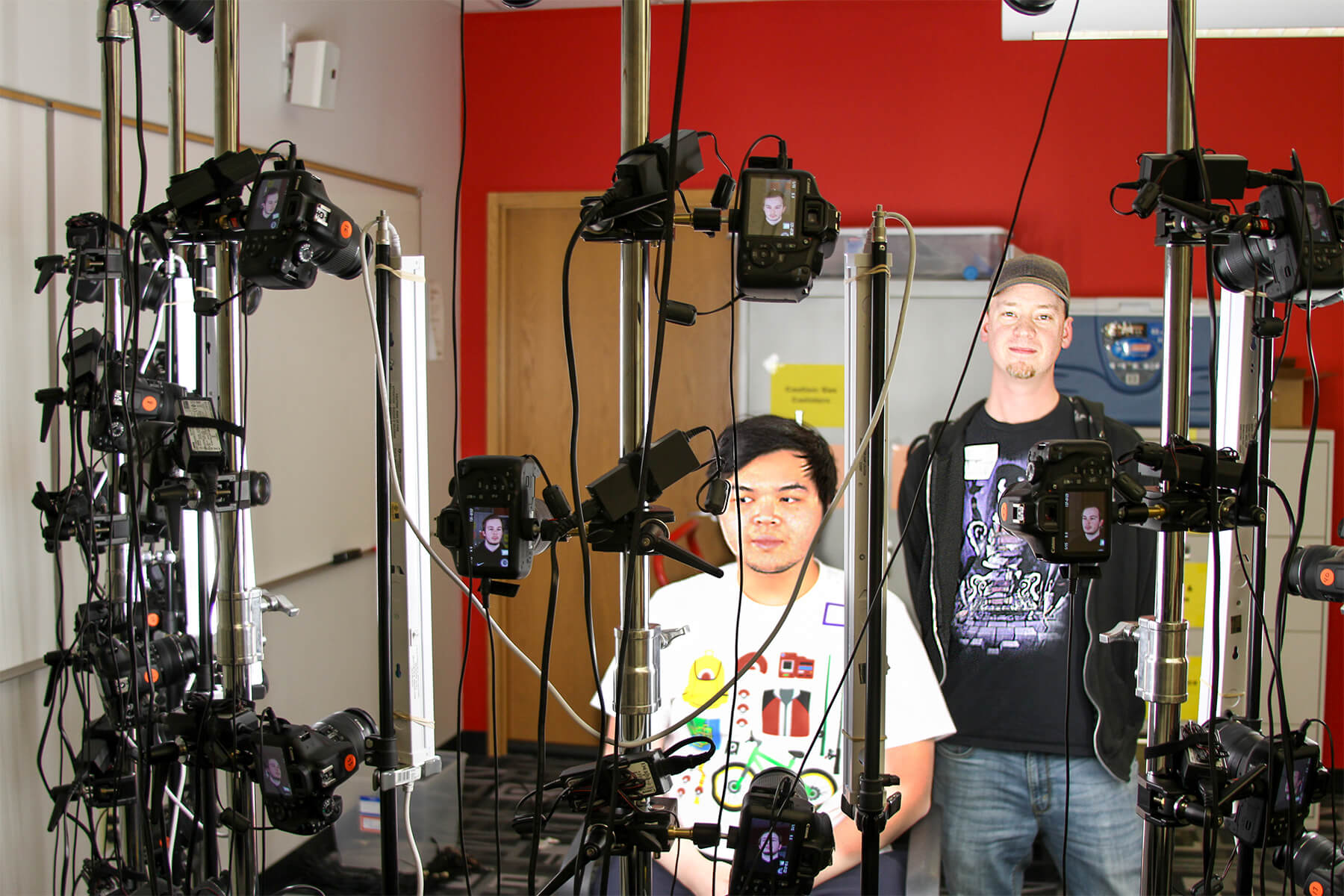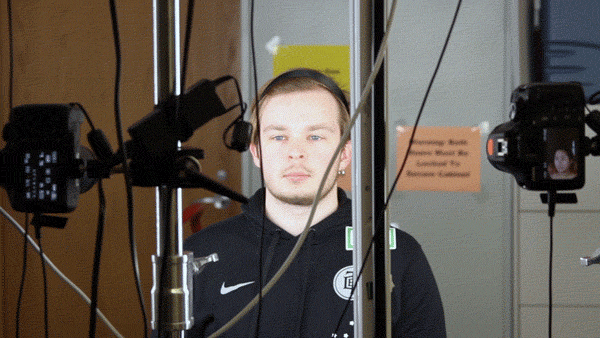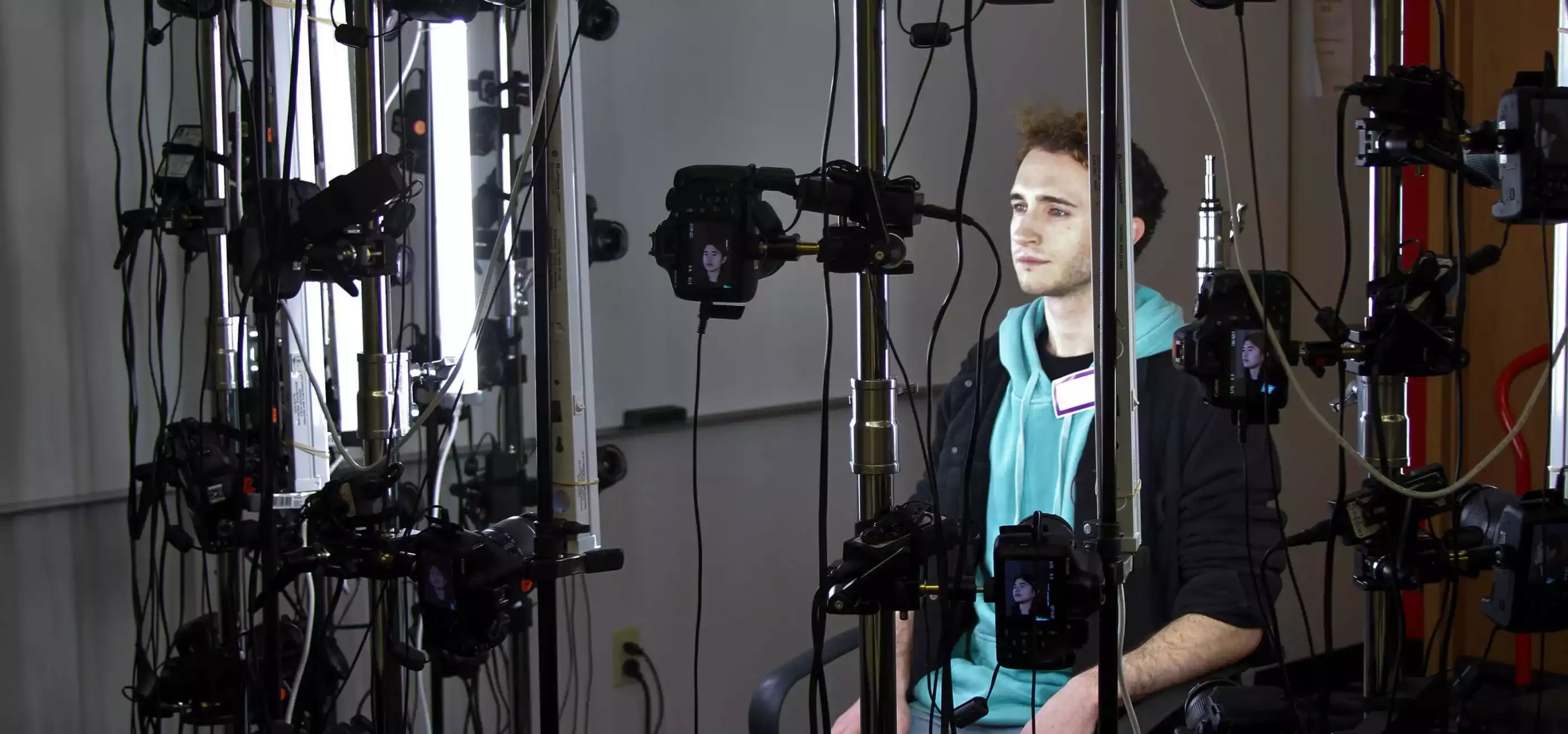Undead Labs technical artist Matt Heiniger said he has trouble playing his studio’s zombie survival game State of Decay 2 the way a normal person might. The reason? He’s rather attached to the characters.
“I can name every person in the game. I’ve met them all in real life,” Heiniger told students and faculty during a recent on-campus colloquium. “The game has permadeath, so when a character dies, I go, ‘Oh no! Not Marty!’”
The reason Heiniger knows the game’s enormous character cast personally, and the occasion for his visit to DigiPen, is thanks to a technique called photogrammetry. Put simply, it’s a process that allows game developers to use a series of photos to reconstruct a 3D model of a physical object. Using the technique, Heiniger has scanned over 200 human faces into State of Decay 2, including co-workers, random volunteers from the internet, a Seattle police officer, and even his own mom. Every character’s face in the game belongs to a real human.

Students gathered in the Van Gogh auditorium to learn about the low cost, high-yield technique, which Heiniger described as something of a unicorn. “It’s hard to find something in our industry that both decreases production time and improves quality. It’s usually one at the expense of the other,” Heiniger said. “But this does exactly that.” Later in the evening, throngs of students excitedly lined up to have their own faces added to Undead Labs’ facial database for use in the studio’s future games.
For the DigiPen event, each student’s face was captured by way of a 40-camera rig Heiniger brought to campus. When Heiniger first started doing photogrammetry for Undead Labs, however, he only used a single camera — his own personal SLR. The first State of Decay characters were all modeled the traditional way, with the studio’s sole character artist sculpting their faces from scratch in ZBrush. Curious if he could find a way to speed up the pipeline for the game’s sequel, Heiniger tried scanning a coworker’s face by taking a series of photographs from a variety of angles, all in even lighting. Uploading the photos, a program was then able to piece them together and match up various points on the face, determine their depth, and generate a 2-million-polygon 3D mesh.

“I decided to do it on a whim, but then I showed our coworker’s face to our character artist and they were thrilled,” Heiniger said. “They turned it into a playable character that same day!” Although the facial models can’t go straight into the game — the character artist does need to do two to five hours of cleanup, as well as add in the back of the head, eyes, and teeth — the character creation process is significantly faster, according to Heiniger. After graduating to the current 40-camera rig Heiniger brought to campus, the process sped up even further, allowing Undead Labs to capture higher quality scans that reduce clean-up time significantly.
Students curious about trying the technique themselves all had similar questions — such as, do you need to buy an expensive 40-camera setup to pull it off? “With photogrammetry, when it comes down to it, the lens quality isn’t super important,” Heiniger said. “You can do it on a phone.”
Although students were vocally excited at the opportunity to have their own faces included in future Undead Labs projects, Heiniger highlighted some other amusing uses of photogrammetry as well.
“One time we did this on a coworker and scanned him from the top of his head down to his upper chest, instead of just his neck, as an experiment,” Heiniger said. “Then we took that and 3D printed a bust of him. So … he has that now!”
